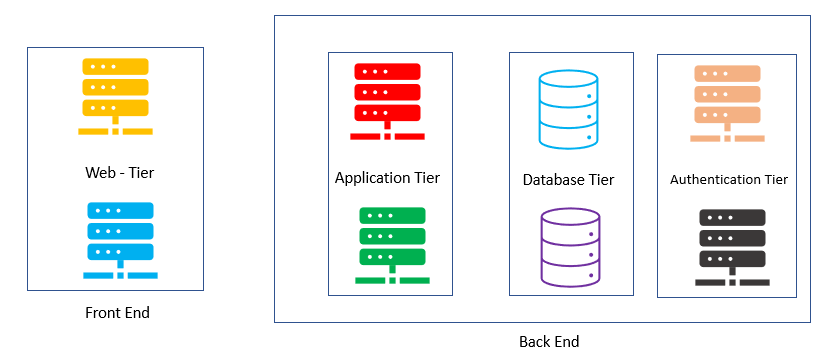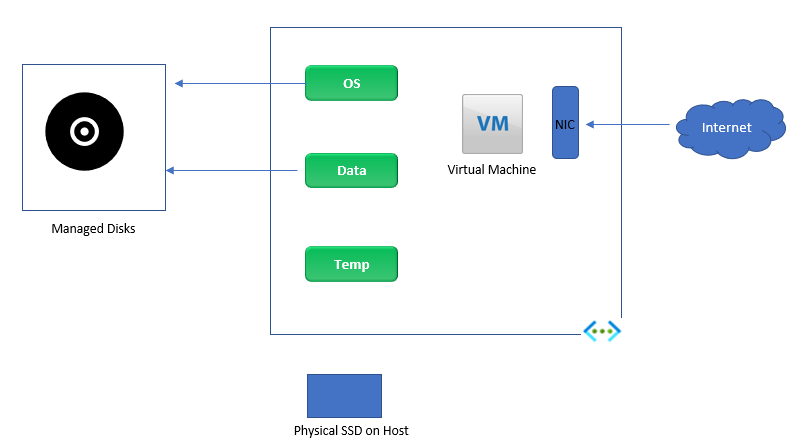EMAIL SUPPORT
dclessons@dclessons.comLOCATION
USAWS Virtual Machine
It is the Azure Microsoft IaaS Offering and is used when customer want to move its entire Application infrastructure, which includes multiple tier Like Web, APP, Database.
Below figure describes multitier Application Infrastructure.

A Virtual Machine is a simulated server running on Physical hardware and have access to CPU, Memory, Storage, that exists on a physical Server.
Below is Azure VM Architecture having NIC and Hard drives.

OS disk contains pre-installed OS, that was selected while VM creation. These OS are like Ubuntu, Red Hat, Debian, Windows Server, Windows 10. OS disks have maximum capacity of 2048 GB.
Data Disk is used to store application data such as cache, auditing logs, configuration setting, data in a file or Database management System. No of data disks that can be attached to an Azure VM is based on size and expected number of IOPS.
Temporary disk is used for storing swap and page files. These files are used to manage memory, offloading memory from RAM.
Managed Disks are available in below options:
- Standard HDD
- Standard SDD
- Premium SDD
While Creating a Azure VM , there are some points that needs to be carefully looked like its location , its Size , Quota Limits and Operating Systems.
There are various categories of Azure VM , below are its type and description

Azure VM Images
An image is a template that defines requirement in which it will run. In this definition, OS type is also defined. There are various tools that are used to create image for deployment to an Azure VM, example: Azure VM image builder , System Preparation tool (SYSPREP) , Disk2VHD , snapshot , export from VMware , Virtual Box.
Azure Supported Operating Systems.
Microsoft Azure uses following OS type for its VM, some of them are as follows:
- Windows
- Linux
Windows:
Windows server OS is mostly used software products used in enterprise level workloads. Below are 10 supported windows images available via Azure marketplace in the portal.
- Windows Server 2008 R2 SP1
- Windows Server 2012 Datacenter
- Windows Server 2012 R2 Datacenter
- Windows Server 2016 Datacenter
- Windows Server 2016 Datacenter – Server Core
- Windows Server 2016 Datacenter – with Containers
- Windows Server 2019 Datacenter
- Windows Server 2019 Datacenter Server Core
- Windows Server 2019 Datacenter Server Core / w Containers
- Windows Server 2019 Datacenter with Containers
Below table provides details about Windows versions to Azure VM recommendation.

*marks means all variants of Windows versions. It is also possible to bring your own on-premises VM to the Azure platform, means you can convert the OS and its configuration to VHD (Virtual Disks) and export it to Azure and deploy it to Azure VM.





LEAVE A COMMENT
Please login here to comment.